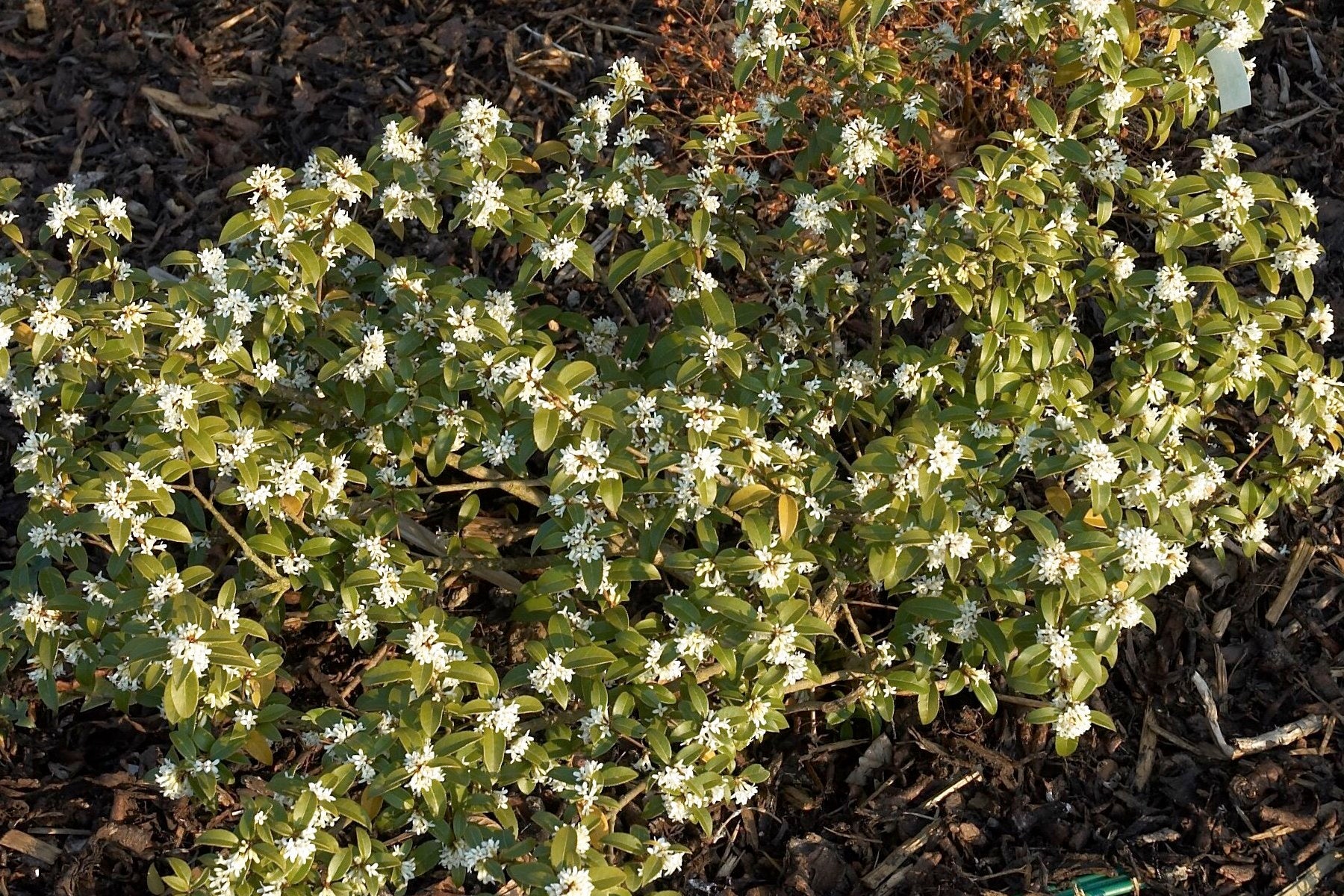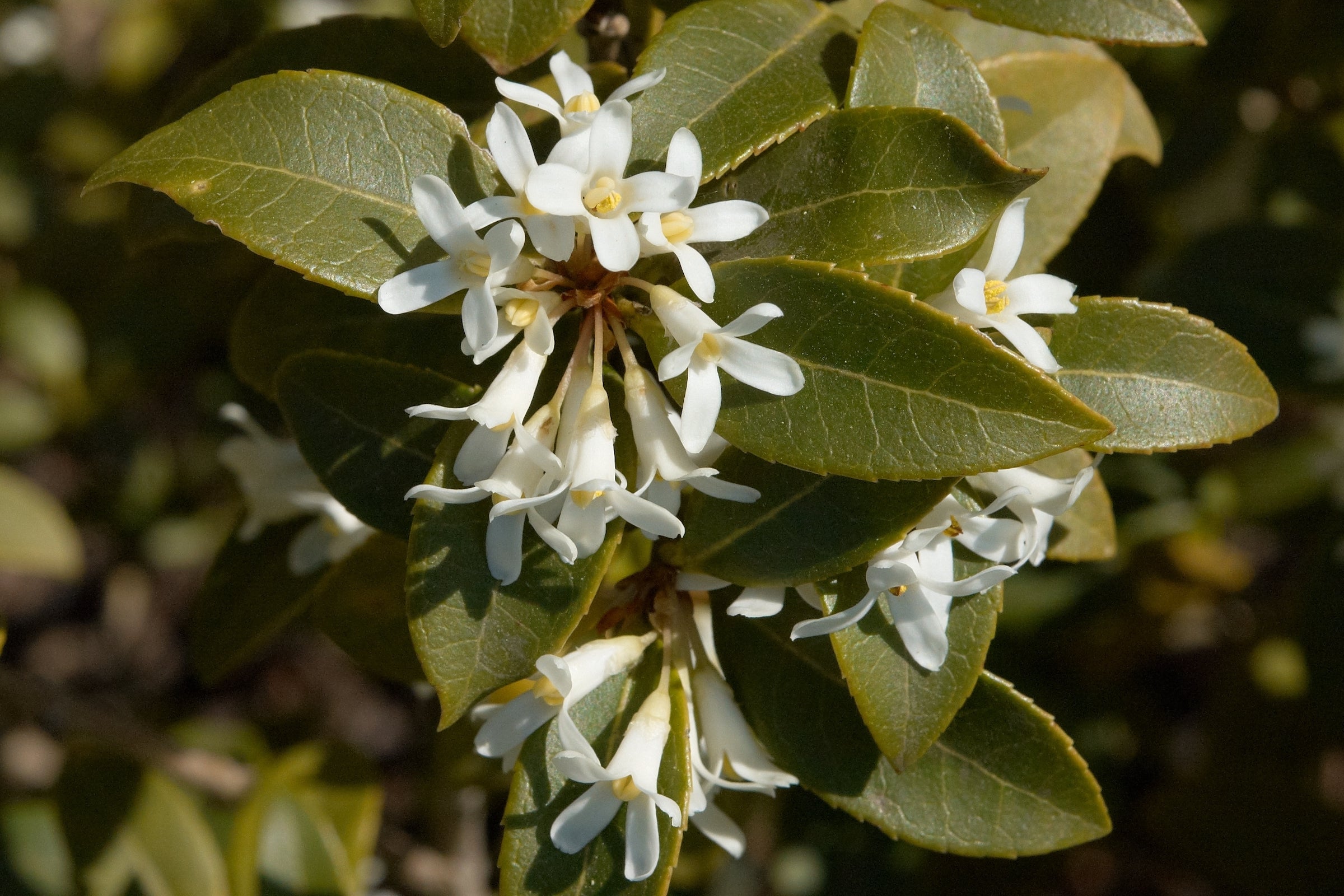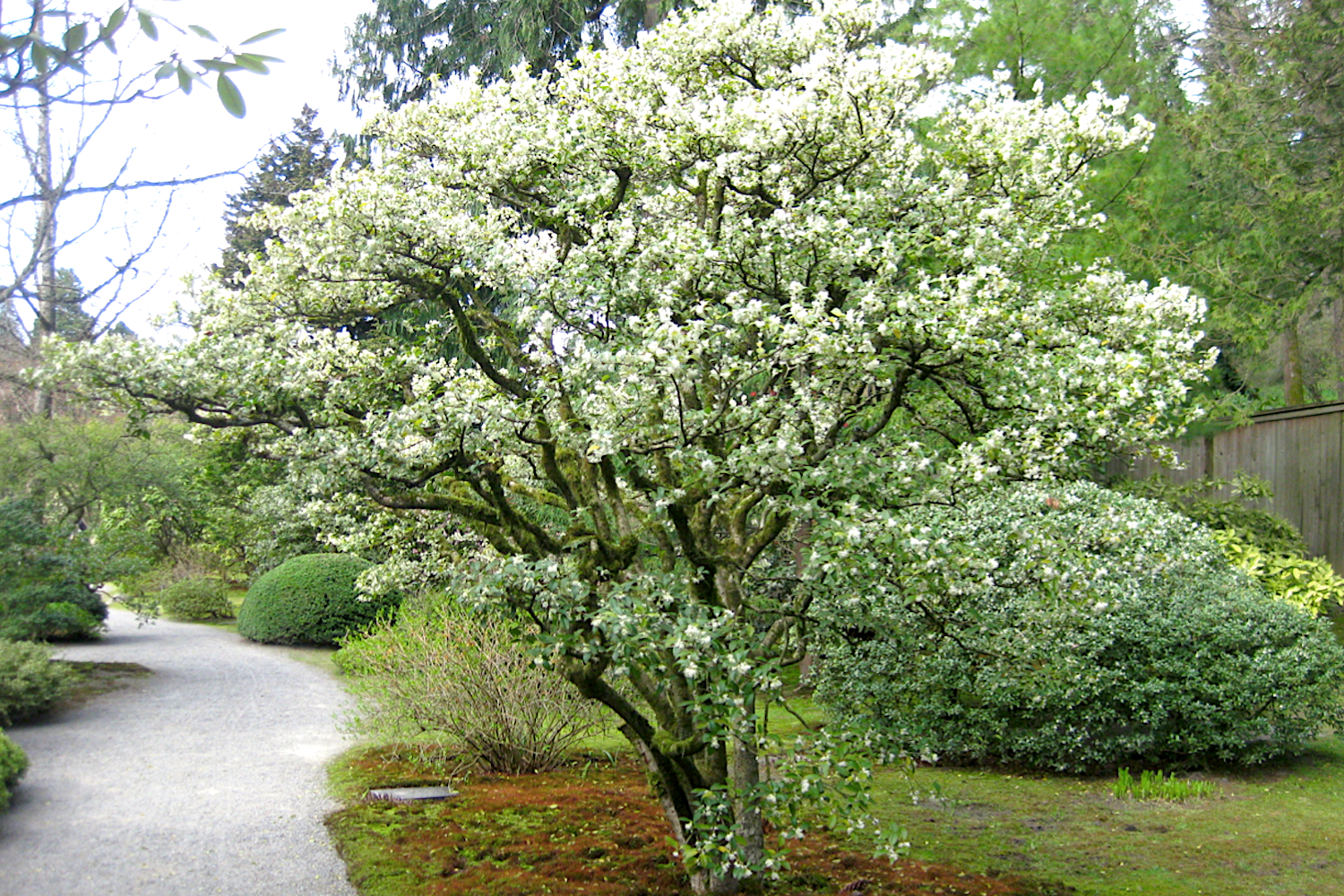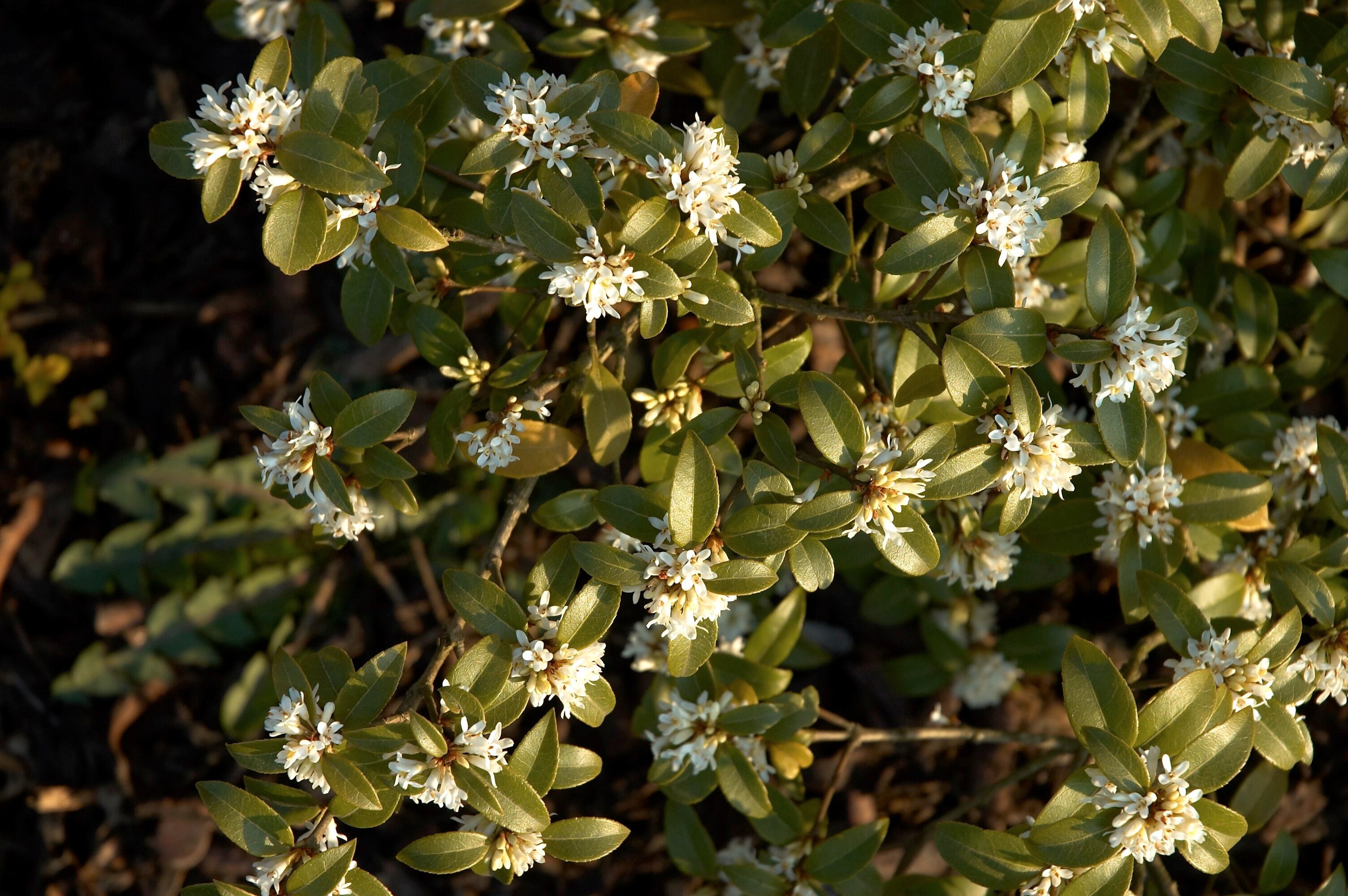Osmanthus x burkwoodii
Approx. 0.5 litre pot
About this cultivar:
Osmanthus x burkwoodii is a dense, slow-growing, large evergreen shrub of rounded habit, with dark green, ovate leaves and clusters of small, highly-scented white flowers, occasionally followed by a few black fruits. Keep it pruned enough, and you have a bonsai tree, don't and you can get a small tree. Chances are you'll do something in between.
A hybrid between the Chinese Osmanthus delavayi and Turkish Osmanths decorus produced by Messrs Burkwood and Skipwith at their nursery at Kingston-on-Thames in 1920s. The flowers are smaller, less fragrant, and perhaps less white than delavayi, but the decorus side of the equation provides larger leaves, longer stems, and a more robust, reliable, plant.
This is an old classic. Has the Royal Horticultural Society Award of Garden Merit (RHS AGM).
- Position: Full sun, partial shade
- Soil: Almost any soil, grows well in Ballyrobert
- Flowers: April, May
- Other features: Grows well in Ballyrobert, Royal Horticultural Society Award of Garden Merit (RHS AGM), Scented
- Hardiness: H5 - Hardy in most places throughout the UK even in severe winters (-15 to -10°C), Fully hardy, grows well in Ballyrobert
- Habit: Bushy
- Foliage: Evergreen
- Height: 30 - 300 cm (1 - 10 ft) Prune for smaller
- Spread: 30 - 240 cm (1 - 8 ft) Prune for smaller
- Time to full growth: 10 to 20 years
- Plant type: Shrub, tree
- Colour: Green, white
- Goes well with: -
About this genus:
Osmanthus is a genus of about 30 species of flowering plants in the olive family (Oleaceae). Most of the species are native to eastern Asia with a few species extending a bit further north and south. The genus name comes from the Greek words ‘osme’ meaning fragrant and ‘anthos’ meaning flower. Commonly the are often called sweet fragrant olive. So, you can guess that they have a sweet smell.
Osmanthus range in size from shrubs to small trees. The leaves are opposite, evergreen, and simple, with an entire, serrated or coarsely toothed margin. Some Osmanthus can end up looking very much like Holly. The flowers are produced in spring, sometimes summer or autumn. Each flower is usually white, with a four-lobed tubular-based corolla ('petals'). The flowers grow in small panicles, and in several species have a strong fragrance. The fruit is a small hard-skinned dark blue to purple drupe (prune) containing a single seed. You guessed it, much like an olive.
Osmanthus are popular shrubs in parks and gardens throughout warm temperate zones, you probably see them on holiday, but some are suitable for colder climates. Several hybrids and cultivars have been developed for this purpose. Osmanthus flower on old wood and produce more flowers if unpruned. A pruned shrub often produces few or no flowers for one or more years, before the new growth matures sufficiently to start flowering. But don’t let that stop you pruning, pruning produces more new stems and shoots so in the long term more flowers (this is true for nearly all plants quite frankly).
In the far east many species are grown for their sweet orange scent and the flowers are sometimes added to some teas, wines, and beers. Osmanthus wine is prepared by infusing whole Osmanthus fragrans flowers in rice wine and is traditionally consumed during the Mid-Autumn Festival.
These days Osmanthus are mostly pushed as box or privet alternatives. Dont let that fool or limit you, most ‘box alternatives’ are alternatives because box blight has rendered cheap box as no longer available, not because box is a better garden plant! Osmanthus is slow growing, so easy to control. In the garden they are usually a versatile evergreen that are reasonably happy in shade, so often used to fill some tricky areas that aren’t swamp or deserts. They are wonderfully fragant, flowery, ornamental plants that look great formally or wild, together or own their own. They can even be used as bonsai or topiary. That is why they are so popular here, America, and Asia.








